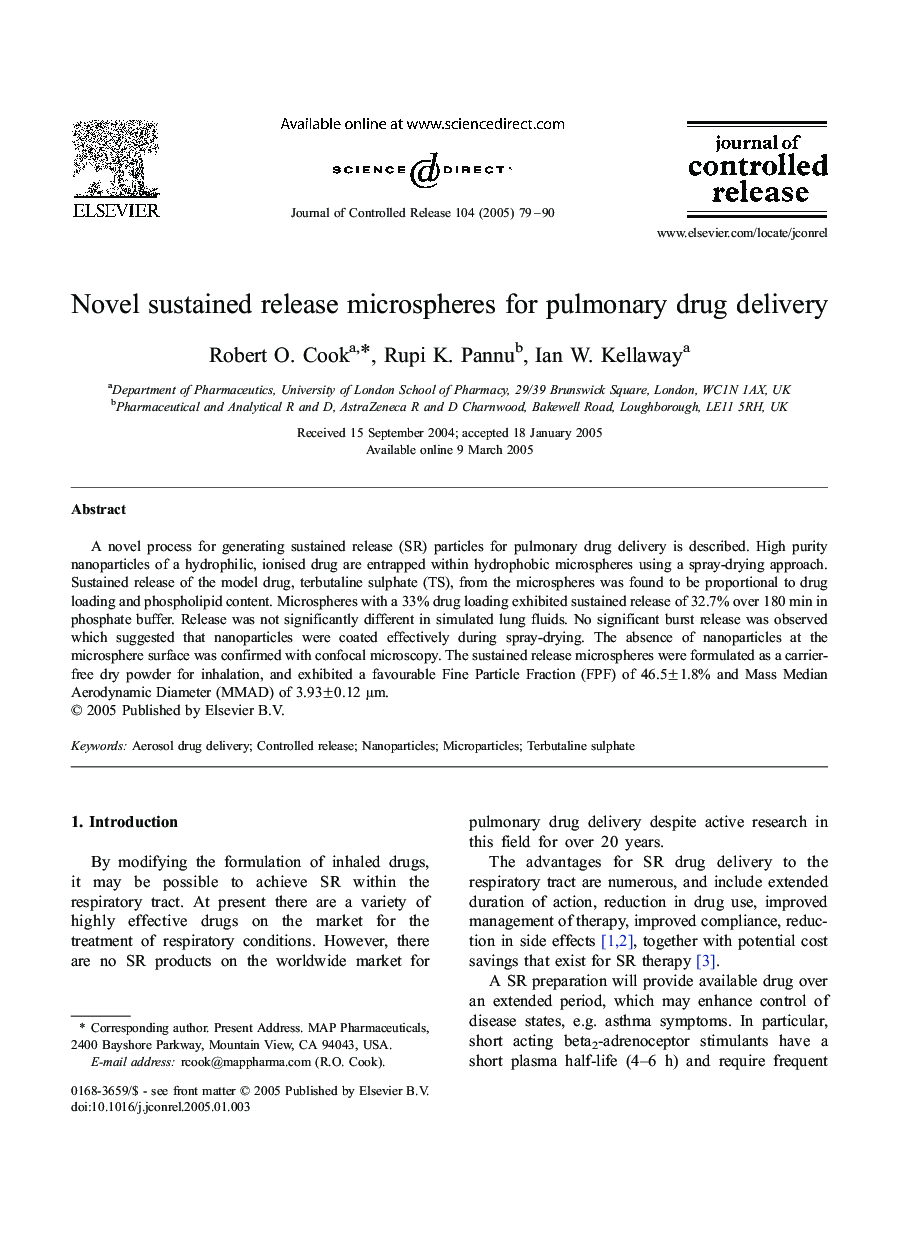| Article ID | Journal | Published Year | Pages | File Type |
|---|---|---|---|---|
| 10613588 | Journal of Controlled Release | 2005 | 12 Pages |
Abstract
A novel process for generating sustained release (SR) particles for pulmonary drug delivery is described. High purity nanoparticles of a hydrophilic, ionised drug are entrapped within hydrophobic microspheres using a spray-drying approach. Sustained release of the model drug, terbutaline sulphate (TS), from the microspheres was found to be proportional to drug loading and phospholipid content. Microspheres with a 33% drug loading exhibited sustained release of 32.7% over 180 min in phosphate buffer. Release was not significantly different in simulated lung fluids. No significant burst release was observed which suggested that nanoparticles were coated effectively during spray-drying. The absence of nanoparticles at the microsphere surface was confirmed with confocal microscopy. The sustained release microspheres were formulated as a carrier-free dry powder for inhalation, and exhibited a favourable Fine Particle Fraction (FPF) of 46.5±1.8% and Mass Median Aerodynamic Diameter (MMAD) of 3.93±0.12 μm.
Related Topics
Physical Sciences and Engineering
Materials Science
Biomaterials
Authors
Robert O. Cook, Rupi K. Pannu, Ian W. Kellaway,
